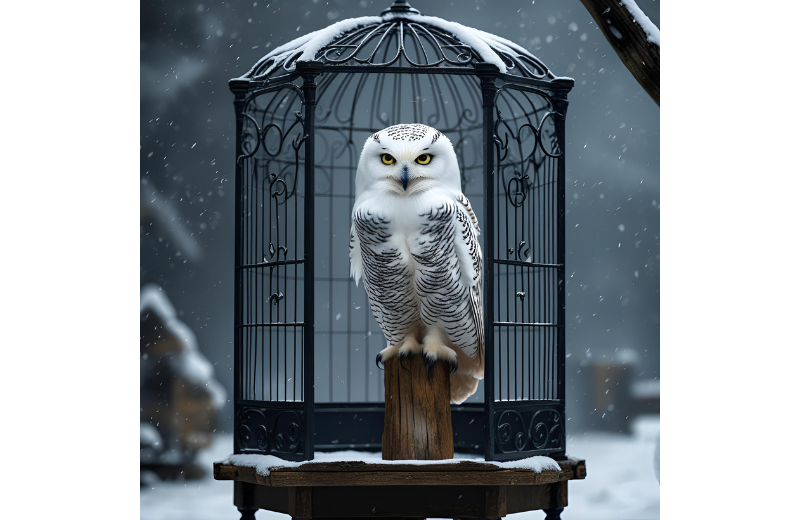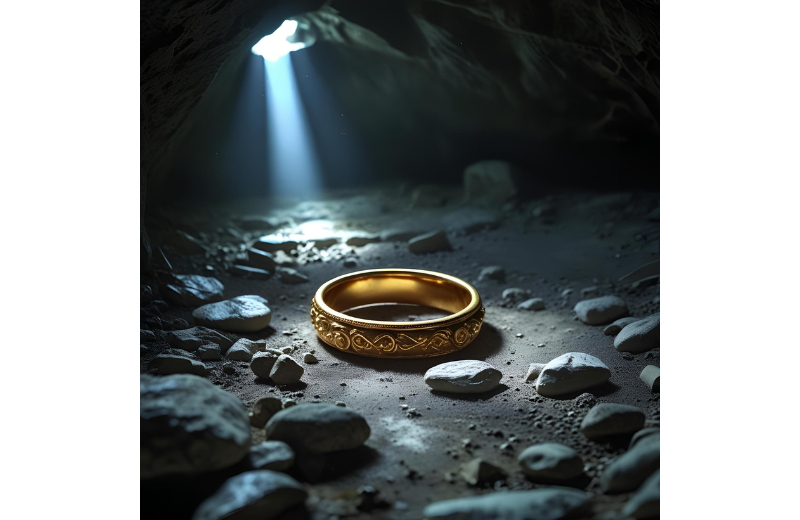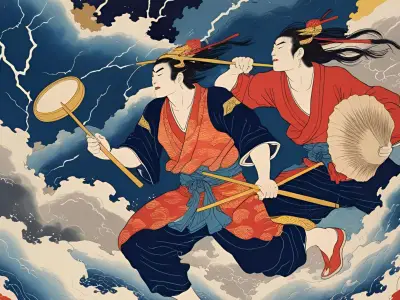If you’re interested in storytelling, you’ve probably come across the terms protagonist and antagonist. These two characters lie at the heart of every story, from fairy tales to thrillers to sweeping historical dramas.
But what exactly do they mean? And more importantly, how do they differ? Whether you're reading for pleasure, writing your own story, or just curious about how stories work, getting to grips with these roles can give you a deeper understanding of what makes a narrative tick.
Jump to:
- What Is a Protagonist?
- Protagonist Examples
- What Is an Antagonist?
- Antagonist Examples
- What Is the Difference Between a Protagonist and an Antagonist?
- Protagonist vs Antagonist in Popular Stories
- How to Write a Good Protagonist
- How to Write a Good Antagonist
- Frequently Asked Questions
- Study our Novel Writing Diploma for £29
Recommended for you!
Best SellersWhat Is a Protagonist?
The protagonist is the main character of a story, the one we follow most closely. When someone talks about “the hero” of a tale, they’re usually talking about the protagonist.
How to identify the protagonist in a story:
- They usually face a goal, quest, or problem.
- Their choices shape the events of the plot.
- They grow or transform in some way.
Protagonist Examples:

- Harry Potter in the Harry Potter series – A boy who discovers he’s a wizard and must face the dark wizard Voldemort.
- Elizabeth Bennet in Pride and Prejudice – A clever and spirited woman navigating social expectations and romance.
- Frodo Baggins in The Lord of the Rings – A hobbit tasked with destroying a powerful ring.
- Katniss Everdeen in The Hunger Games – A teenager who volunteers to take her sister’s place in a deadly competition and becomes a symbol of rebellion.
What Is an Antagonist?
The antagonist creates conflict, tension, and obstacles. They don’t have to be evil or villainous, but they do need to oppose the protagonist in some significant way. It’s important to remember that an antagonist isn’t always a person, and they’re not always bad.
The antagonist could be:
- A character (e.g., Darth Vader in Star Wars)
- A group (e.g., The Capitol in The Hunger Games)
- A force of nature or internal struggle (e.g., addiction, fear, self-doubt)
Antagonist Examples:

- Lord Voldemort in the Harry Potter series – A dark wizard obsessed with power and immortality who seeks to destroy Harry and control the wizarding world.
- Mr Darcy in Pride and Prejudice – A proud and reserved gentleman whose initial arrogance and social status challenge Elizabeth Bennet’s values and perceptions.
- Gollum in The Lord of the Rings – A twisted creature torn by obsession and duality, who both aids and endangers Frodo on his quest to destroy the One Ring.
- President Snow in The Hunger Games – A cold and calculating ruler who uses fear, manipulation, and violence to maintain control over the districts and suppress rebellion.
What Is the Difference Between a Protagonist and an Antagonist?
The protagonist pushes the story forward, while the antagonist pushes back. That push and pull is the engine of the plot. It’s not about good versus evil, it’s about conflicting objectives.
A protagonist can be deeply flawed or morally ambiguous, and an antagonist can be well-meaning or even heroic in their own eyes. What matters most is the tension between them.
Protagonist vs Antagonist in Popular Stories

Looking at well-known stories can help bring the protagonist versus antagonist relationship to life. Here are a few classic examples:
- Matilda
Protagonist: Matilda Wormwood
Antagonist: Miss Trunchbull - Finding Nemo
Protagonist: Marlin
Antagonist: The Ocean - Batman
Protagonist: Bruce Wayne
Antagonist: The Joker - The Great Gatsby
Protagonist: Jay Gatsby
Antagonist: Tom Buchanan
In each case, the antagonist challenges the protagonist’s values, beliefs, or goals in powerful and personal ways. These relationships fuel the story’s tension and make the stakes feel real. Without that central conflict, the story simply wouldn’t have the same impact.
How to Write a Good Protagonist

A well-written protagonist draws readers into the story and keeps them emotionally invested. Keep these key elements in mind when developing your main character.
- Give them a goal – They need something to strive for.
- Make them flawed – Imperfections make characters believable.
- Let them grow – Show how they change over time.
- Keep them active – Their choices should drive the plot.
- Build emotional connection – Readers should care about what happens to them.
How to Write a Good Antagonist
An antagonist should add tension, depth, and urgency to your story. Here’s how to make them just as compelling as your protagonist.
- Give them purpose – They should believe in what they’re doing.
- Avoid clichés – Go beyond the “evil for evil’s sake” trope.
- Make them strong – A powerful antagonist raises the stakes.
- Create conflict – Their goals should directly oppose the protagonist’s.
- Add complexity – Give them depth, backstory, or even sympathy.
Recommended for you!
Best SellersFrequently Asked Questions
What makes a protagonist unlikeable?
A protagonist can become unlikeable if they’re selfish, passive, or lack clear motivation. However, an unlikeable protagonist can still be compelling if their flaws are realistic, their growth is meaningful, or their situation is emotionally engaging. Readers don’t always need to like a character to want to follow their journey; they just need to find them interesting.
Can a protagonist be a villain?
Think about Walter White in Breaking Bad, or Amy Dunne in Gone Girl. These are protagonists because the story revolves around them, even though they behave in ways that most people would consider wrong, even evil. In this case, the term anti-hero might apply.
Can a protagonist change throughout the story?
Protagonists often experience the greatest transformation in a story. This change, known as a character arc, is usually the result of challenges, choices, or revelations. Their evolution is what gives many stories emotional impact and meaning.
Are protagonists always the narrator?
While many stories are told from the protagonist’s point of view, some are narrated by secondary characters or told from an omniscient perspective. The protagonist remains the central figure driving the plot, even if they’re not the one telling the story.
Can there be two protagonists?
Think about Will and Marcus in About a Boy, or Elsa and Anna in Frozen. These stories give equal weight to multiple characters, often exploring different perspectives or intersecting arcs.
Can the antagonist be a good guy?
The antagonist doesn't have to be evil; they just need to be in conflict with the protagonist’s goals. In Les Misérables, Inspector Javert is technically the antagonist to Jean Valjean, but his motivations are rooted in law and justice.
Can an antagonist become a protagonist in a sequel or spin-off?
This shift happens quite often in literature and film. When the story focuses on the former antagonist’s perspective, they can take on the role of protagonist, especially if their motivations are explored in more depth. An example is Maleficent, where the supposed villain from Sleeping Beauty becomes the central character with her own story.
Why do some stories not have a clear antagonist?
Some stories focus more on internal conflict or character development than traditional hero-versus-villain plots. In these cases, the antagonist might be an internal struggle, such as doubt, grief, or fear, rather than an opposing character. These stories often explore psychological or emotional themes.
Study Our Novel Writing Diploma for £29
Ready to write your own unforgettable protagonist and antagonist? The Novel Writing Diploma Course at the Centre of Excellence is the perfect next step. The course is designed for writers of all levels and covers every stage of writing a novel, from initial idea to final polish. For a limited time, you can enrol for a discounted price of £29!













